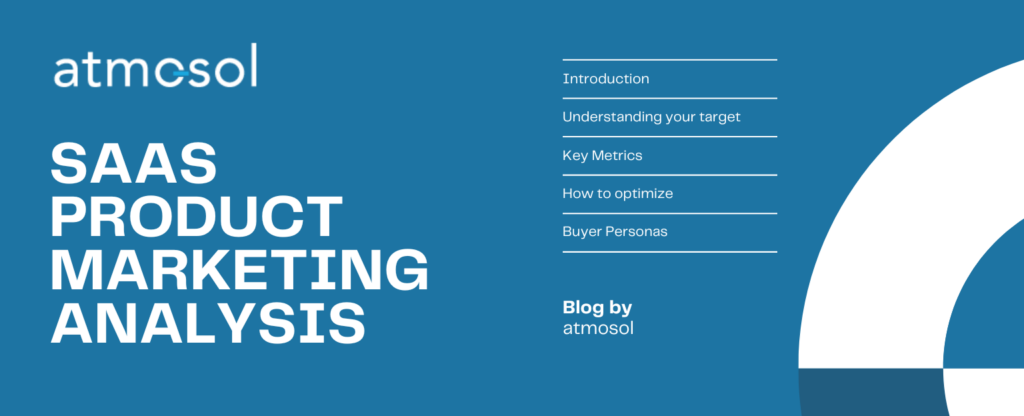Introduction to SaaS Product Marketing Analysis
In today’s competitive business landscape, understanding how to effectively market your Software as a Service (SaaS) product is crucial to your success. SaaS product marketing analysis helps businesses understand the strengths and weaknesses of their marketing strategies, allowing them to make informed decisions and improve their campaigns. This article will provide an in-depth look at the various components of SaaS product marketing analysis, helping you gain a competitive edge in the market.
Understanding Your Target Market
Before you can effectively analyze your SaaS product marketing strategy, it’s essential to have a deep understanding of your target market. This includes identifying your ideal customer profile, their pain points, and their needs. By knowing your target audience, you can tailor your marketing messages to resonate with them and ultimately drive conversions.
Buyer Personas
Create detailed buyer personas that outline the characteristics, goals, and challenges of your target audience. This helps you visualize your ideal customer, enabling you to create marketing materials that speak directly to their needs.
Market Segmentation
Segment your market based on demographics, firmographics, and behavioral patterns. This allows you to create targeted marketing campaigns for each segment, increasing the effectiveness of your efforts.
Competitive Analysis
Identify your top competitors and analyze their marketing strategies. By understanding their strengths and weaknesses, you can capitalize on opportunities and differentiate your SaaS product in the market.

Key Metrics for SaaS Product Marketing Analysis
To effectively analyze your SaaS product marketing efforts, it’s essential to track key performance indicators (KPIs). These metrics provide insights into the success of your marketing campaigns and help you make data-driven decisions.
Lead Generation Metrics
Monitor the number of leads generated through various marketing channels, such as email, social media, and content marketing. Analyze the conversion rates and cost per lead for each channel to determine their effectiveness.
Engagement Metrics
Track user engagement with your marketing materials, including click-through rates, time spent on pages, and content downloads. High engagement indicates that your messaging is resonating with your target audience.
Churn Rate
The churn rate is the percentage of customers who cancel their subscriptions within a given period. Analyzing this metric can help you identify issues with your product or marketing efforts, allowing you to take corrective action.
Customer Lifetime Value (CLV)
CLV is the estimated revenue generated by a customer during their entire relationship with your company. By calculating this metric, you can better understand the long-term value of your marketing efforts.
Optimizing Your SaaS Product Marketing Strategy
Once you’ve analyzed your marketing efforts, it’s time to optimize your strategy to drive better results. Here are some best practices to consider when refining your SaaS product marketing plan.
Content Marketing
Create high-quality, valuable content that addresses the needs and pain points of your target audience. This can include blog posts, case studies, whitepapers, and webinars. By offering valuable resources, you can establish your brand as a thought leader and attract potential customers.
Email Marketing
Leverage email marketing to nurture leads and move them through the sales funnel. Personalize your emails to make them more engaging and relevant to your audience.
There are 4 Billion email users (Source). With that high number of users, email marketing could turn out to yield the best returns on investment (ROI). 33% of marketers send weekly emails, and 26% send emails multiple times per month. (Databox, 2022)
Social Media Marketing
Utilize social media platforms to reach your target audience and build brand awareness. Share valuable content, engage with your audience, and leverage social advertising to drive traffic and leads.
Conversion Rate Optimization (CRO)
Analyze your website and landing pages to identify areas where you can improve the user experience and increase conversions. Implement A/B testing to determine the most effective design elements and messaging and call to action.
Search Engine Optimization (SEO)
Optimize your website and content for search engines to improve your organic visibility and drive targeted traffic. Focus on keyword research, on-page optimization, and link-building strategies.
In-Depth Look at Buyer Personas for SaaS Product Marketing Analysis
Buyer personas are fictional representations of your ideal customers, created based on market research and real customer data. They play a critical role in SaaS product marketing analysis, enabling you to create targeted marketing campaigns that resonate with your audience. Here, we’ll dive deeper into developing and using buyer personas in your SaaS marketing strategy.
Research Your Target Audience Thoroughly
Begin by conducting extensive research on your target audience. Gather demographic and firmographic information, as well as insights into their goals, challenges, and preferences. This information can be obtained through various sources, such as:
- Customer interviews and surveys
- Sales team feedback
- Industry reports and market research
Identify Common Patterns
Analyze the data you’ve collected to identify common patterns and trends among your customers. Look for similarities in their backgrounds, goals, and challenges, as these will serve as the basis for your buyer personas.
Create a Detailed Buyer Persona
Based on your research, create multiple buyer personas representing your customer segments. Include as much detail as possible, such as:
- Demographics (age, gender, location, income)
- Firmographics (company size, industry, job title)
- Goals and objectives
- Pain points and challenges
- Preferred communication channels
Tailor Your Marketing Strategy
With your buyer personas in place, you can now create tailored marketing campaigns that speak directly to each persona’s needs and preferences. This includes creating targeted content, personalizing your messaging, and selecting the most effective marketing channels for each persona.
Continuously Refine Your Buyer Personas
Buyer personas are not static; they should evolve as your company grows and your market changes. Regularly review and update your personas based on new customer data and feedback, ensuring your marketing efforts remain relevant and effective.
By leveraging detailed buyer personas in your SaaS product marketing analysis, you can create targeted, impactful marketing campaigns that resonate with your audience and drive results.
Conclusion
In conclusion, SaaS product marketing analysis is a critical component for businesses seeking to gain a competitive edge in the fast-paced world of software as a service. By understanding your target market, tracking key performance metrics, and optimizing your marketing strategy, you can enhance your campaigns’ effectiveness and drive growth.
Developing detailed buyer personas is a fundamental aspect of this process, as it enables you to tailor your marketing efforts to the unique needs and preferences of your audience. By continuously refining your personas and staying up-to-date with industry trends, you’ll be better positioned to achieve success in the SaaS market.
Utilize the insights and best practices shared in this article to maximize your SaaS product marketing analysis and drive outstanding results for your business.
Do check out our previous blog about SaaS Trends in the Future: The Future of Software as a Service

